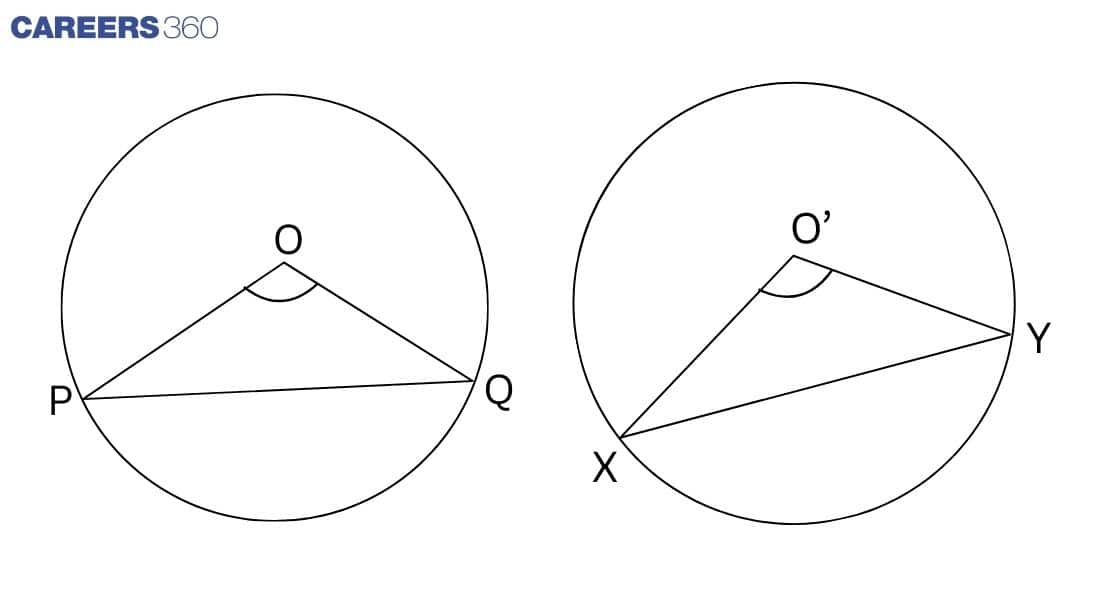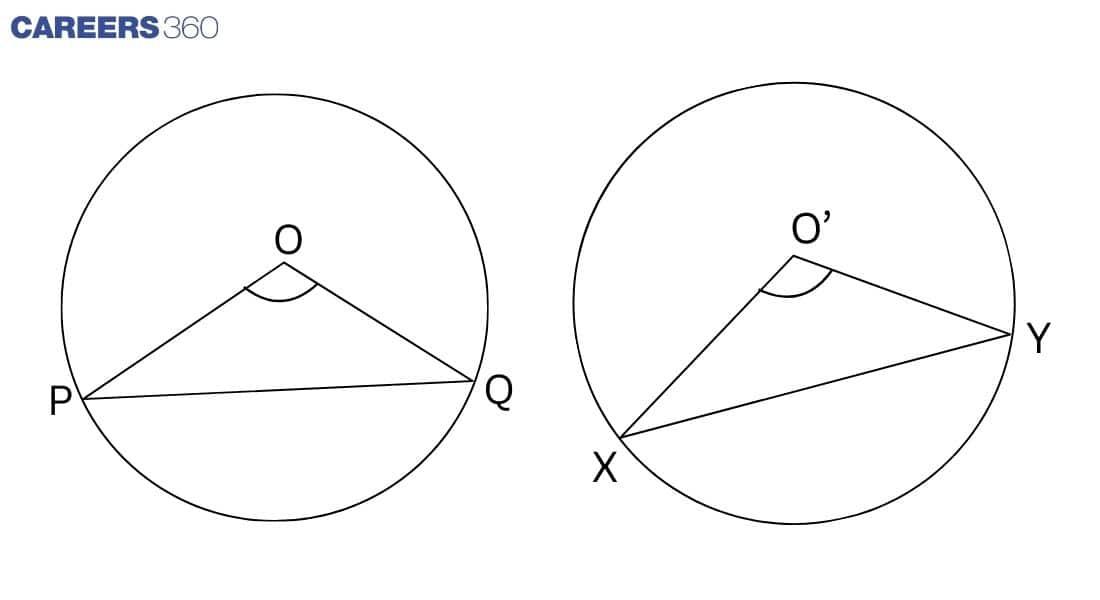NCERT Solutions for Class 9 Maths Chapter 9 Exercise 9.1 - Circles
A circle is a two-dimensional geometrical figure in which all points on the surface of the circle are equidistant from the centre point. A circle can be characterised as a shut (closed), two-dimensional curved shape, with no pointed vertex, with zero corners, such that every point of the circle is equidistant from the fixed centre of the circle. Radius is the distance from the centre of the circle to any point on the circumference of the circle. A circle's chord is the line segment that connects two locations on its circumference. The circumference of a circle is the perimeter of a circle; we can divide the circumference into two parts: a major arc and a minor arc. The major arc includes the majority portion of the arc, and the minor arc includes the minority portion of the arc. You will see that the angles subtended by two or more equal chords of a circle at the centre are equal if you draw two or more equal chords of a circle and determine the angles they occupy in the centre.
This Story also Contains
- NCERT Solutions Class 9 Maths Chapter 1: Exercise 9.1
- Topics Covered in Chapter 9, Circles: Exercise 9.1
- NCERT Solutions of Class 9 Subject Wise
- Subject-Wise NCERT Exemplar Solutions
Students can also get all NCERT solutions according to the standard and subjects. In Class 9 Maths chapter 9 exercise 9.1, we will cover the theorems of the angle subtended by a chord at a point in depth. The following exercises are also included in the NCERT Book Class 9 Mathematics chapter 9 exercise 9.1. Class 9 Maths chapter 9 exercise 9.1 is about the angle subtended by a chord at a point.
NCERT Solutions Class 9 Maths Chapter 1: Exercise 9.1

In the given figure, two congruent circles are given and have centers O and O', and chords are PQ and XY, respectively.
In Δ POQ and XO'Y
PQ = XY (Given)
OP = O'X (Radius of congruent triangle)
OQ = O'Y (Radius of congruent triangle)
ΔPOQ ≅ ΔXO'Y (By SSS rule)
Therefore, ∠POQ = ∠XO'Y (By CPCT)
Solution:
Given: Two congruent circles have equal angles.
To Prove: Two congruent circles have equal angles, and then the chords are equal.

In Δ POQ and XO'Y
∠POQ = ∠XO'Y (Given)
OP = O'X (Radius of congruent triangle)
OQ = O'Y (Radius of congruent triangle)
ΔPOQ ≅ ΔXO'Y (By SSS rule)
Therefore, PQ = XY (By CPCT)
Also Read
Topics Covered in Chapter 9, Circles: Exercise 9.1
As we know NCERT solutions for exercise 9.1 Class 9 Maths chapter 9 are about the angle subtended by a chord at a point. But along with the topics about circles, such as chords, arc, major arc, minor arc, semicircle, we have also used the information about the congruence of the triangle, which we have covered in Class 9 Chapter 7 triangle. Some of the rules and properties which we are using are the side-side-side rule, the side-angle-side rule, and there are some theorems which are covered before Class 9 Maths chapter 9 exercise 9.1. These theorems are at the centre of a circle, equal chords subtend equal angles. If the angles subtended by the chords of a circle at its centre are equal, then the chords are equal, as well as the theorem.
Also See
NCERT Solutions of Class 9 Subject Wise
Students must check the NCERT solutions for Class 9 Maths and Science given below:
Subject-Wise NCERT Exemplar Solutions
Students must check the NCERT exemplar solutions for Class 9 Maths and Science given below:
Frequently Asked Questions (FAQs)
This exercise deals with all the difficult questions regarding circles and its properties.
A circle can be defined as a closed, two-dimensional curved shape, with zero corners such that every point of the circle is equidistant from the fixed centre of the circle.
The radius of a circle is the straight line extending from the centre of a circle to the circumference or surface.
diameter=2 radius
The relation between the radius and diameter of a circle is:
diameter=2 radius
diameter=20 cm
The major segment of the circle contains the centre of the circle whereas the minor segment doesn’t include the centre.
Popular Questions
Courses After 12th
Applications for Admissions are open.
This ebook serves as a valuable study guide for NEET 2025 exam.
NEET Previous 10 Year Questions
Get nowThis e-book offers NEET PYQ and serves as an indispensable NEET study material.
JEE Main Important Physics formulas
Get nowAs per latest syllabus. Physics formulas, equations, & laws of class 11 & 12th chapters
JEE Main Important Chemistry formulas
Get nowAs per latest syllabus. Chemistry formulas, equations, & laws of class 11 & 12th chapters
JEE Main high scoring chapters and topics
Get nowAs per latest 2024 syllabus. Study 40% syllabus and score upto 100% marks in JEE
JEE Main Important Mathematics Formulas
Get nowAs per latest syllabus. Maths formulas, equations, & theorems of class 11 & 12th chapters
